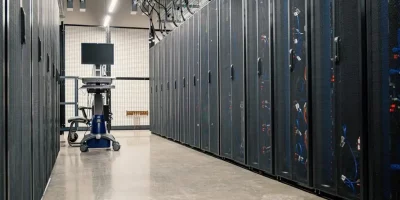When it comes to data centre infrastructure management, it is an area that causes stress for many of the data centre managers that meet. One of the challenges is that DCIM is an umbrella term that covers a lot of areas from asset management to environment controls, and depending on the complexity of your infrastructure can get quite ‘messy’ to manage.
If you have multiple data centres, especially if geographically spread, keeping the DCIM automated and connected can be an issue. Add to this edge data centres, which are becoming all the more common to support IoT and remote locations, and it is easy to see how quickly the problem multiplies.
Equally challenging can be the issue of asset tracking. If assets are changing regularly in cabinets, or indeed moving around sites under the arms of the staff they are assigned to, this can get very complicated.
One of the areas where DCIM gets particularly challenging is in-rack. Space is at a premium, and there is also a tendency to think the job is done if servers are being monitored for performance/downtime, and the cabinet cooling is working well. But the reality is this only scratches the surface of DCIM.
The trick with DCIM is to automate as much as possible, not only does it encourage you to do more with your DCIM, and get more granular, but it stops it feeling like the administrative tasks of running a data centre, such as asset tracking, are stopping you doing the really interesting work.
This is why wireless DCIM systems are becoming more and more popular. Asset management alone can be greatly simplified with the implementation of RF and IR asset tag systems. They can allow real-time asset location tracking at rack or room level, tamper or motion sensing, are very discrete and therefore portable, and can even be hardened for use in demanding environments.
Asset management is typically very labour intensive and human error is the most common cause of misreported assets, either in terms of value, location or operational status.
Having full visibility over your IT estate enables any DC manger to understand in real time what their compute is worth, lifecycle information, audit accounting, and where certain devices are located. Using RF technology can dramatically lower the labour costs, improve accuracy and the ROI seen by companies can be very fast.
Environmental monitoring can also be provided in exactly the same way with everything from basic temperature and fluid detection to differential air pressure, current and voltage sensing. The wireless nature of these new devices is particularly attractive for in-rack environments where clutter and cable dress can be a constant battle.
The big question mark IT managers usually have is over whether using wireless, rather than cabled solutions is a wise move. Our experience time and time again is that wireless is just as reliable, and the benefits offered over cabled solutions justify the switch – the time and headaches saved with asset management alone can more than cover the investment. It is also important to remember that redundancy is built into wireless DCIM implementations.
If you’d like to learn more about wireless DCIM and the solutions we have installed as part of both new data centres and upgrades then do get in touch or look at the infrastructure solutions page.






